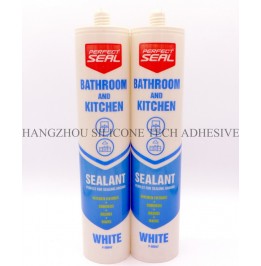Proper curing is essential for sealants to achieve optimal adhesion, flexibility, and durability. Vibrations during the curing process can disrupt molecular bonding, leading to weak joints, uneven surfaces, or premature failure. Understanding the critical periods when sealants are most vulnerable to vibration helps ensure long-lasting performance in construction, automotive, or industrial applications.

The first 24 to 72 hours after application are the most sensitive for sealants, as chemical reactions drive the transition from liquid to solid. During this stage, even minor vibrations—such as foot traffic, machinery operation, or environmental factors like wind or traffic—can deform the material. For example, a sealant applied to a concrete joint may shift if heavy equipment passes nearby, creating gaps or uneven surfaces that compromise waterproofing.
Temperature and humidity further influence this phase. In cold environments, curing slows, extending the vulnerability window. Conversely, high temperatures may accelerate curing but reduce the material’s ability to absorb vibrations without cracking. Monitoring ambient conditions and restricting activity near freshly applied sealants during this period minimizes risks.
Industrial settings, such as factories or warehouses, pose unique challenges. Vibrations from forklifts, conveyor systems, or HVAC units can travel through structures, affecting sealants on floors, walls, or equipment. Isolating work areas or scheduling applications during low-activity periods ensures undisturbed curing.
After the initial 72 hours, sealants begin to harden but remain partially flexible. While they can withstand lighter vibrations, heavy impacts or sustained shaking may still cause damage. For instance, a sealant used in automotive assembly lines might resist minor engine vibrations but could crack if exposed to prolonged shaking during testing phases.
The duration of this stage depends on the sealant type. Silicone-based variants, which cure through moisture absorption, may take longer to reach full stability compared to polyurethane or acrylic formulas. Testing adhesion and flexibility at this point—using non-destructive methods like finger pressure or visual inspection—helps assess readiness for normal use.
Environmental factors continue to play a role. Humidity levels above 70% can prolong the intermediate stage by slowing solvent evaporation or moisture-driven reactions. In such cases, extending the no-vibration period ensures the sealant achieves sufficient hardness before exposure to stress.
Complete curing typically takes 7 to 28 days, depending on the formulation and conditions. At this point, sealants reach their designed mechanical properties, including tensile strength and elasticity. While they can now tolerate regular vibrations, extreme or repeated impacts—such as those from heavy machinery or seismic activity—may still cause wear over time.
Long-term performance hinges on proper initial curing. Sealants that cured under ideal conditions (stable temperature, low humidity, minimal vibration) will outlast those subjected to disturbances. For critical infrastructure, like bridges or pipelines, engineers often conduct stress tests after full curing to verify resilience against vibrations.
In dynamic environments, such as transportation hubs or manufacturing plants, selecting sealants with high vibration resistance is advisable. However, even these materials require undisturbed curing to maximize their lifespan. Regular inspections post-curing help identify early signs of vibration-induced damage, such as micro-cracks or joint separation.
Construction projects, automotive assembly, and electronics manufacturing each have unique vibration challenges. In building construction, sealants around windows or joints must cure without disturbance from nearby drilling or hammering. Scheduling applications during off-hours or using temporary barriers shields fresh sealant from vibrations.
Automotive manufacturers often apply sealants to chassis or interior components during assembly. To avoid vibration issues, robots or conveyors are programmed to minimize shaking during curing. Workers are trained to handle parts gently until sealants harden, preventing deformation.
Electronics manufacturing relies on precision sealants for waterproofing devices. Vibrations from soldering machines or testing equipment can disrupt tiny joints, leading to failures. Cleanroom environments with anti-vibration tables ensure sealants cure uniformly, maintaining device integrity.
By respecting the curing timeline and adapting practices to industry-specific needs, professionals can mitigate vibration risks. Combining material knowledge with environmental controls creates optimal conditions for sealants to perform as intended, ensuring reliability across applications.
Copyright 2019 by Hangzhou Silicone Tech Adhesive Co., Ltd. All rights reserved.
Bathroom Sealant | Acrylic Sealant | Dow Corning 795 | Aquarium Sealant | Dow Corning 732 | Clear Silicone Sealant | Polysulfide Sealant | Glazing Sealant | Mirror Sealant | IG Sealant
Powered by Onepound